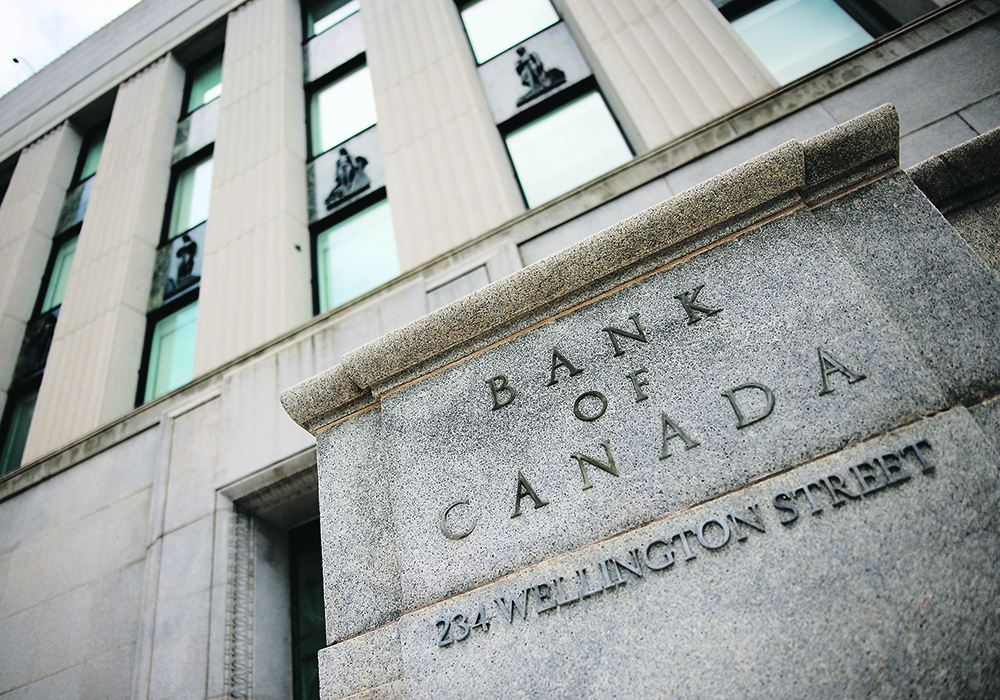OTTAWA (Reuters) — The Bank of Canada reduced its key benchmark rate by 50 basis points last week to 3.75 per cent, its first bigger-than-usual move in more than four years, and hailed signs the country has returned to an era of low inflation.
The central bank, which hiked rates to a 20-year high to fight soaring prices, has now cut four times in a row since June. Inflation in September sank to 1.6 per cent, below the two per cent target.
“We took a bigger step today because inflation is now back to the two per cent target and we want to keep it close to the target,” governor Tiff Macklem said Oct. 23.
Read Also

Using artificial intelligence in agriculture starts with the right data
Good data is critical as the agriculture sector increasingly adopts new AI technology to drive efficiency, sustainability and trust across all levels of the value chain.
Despite three previous cuts totaling 75 basis points, demand has been muted, sales at businesses are sluggish and consumer sentiment is tepid, hurting economic growth.
“Today’s interest rate decision should contribute to a pickup in demand,” Macklem said, adding that the BoC would like to see growth strengthen.
The U.S. Federal Reserve last month started its own rate reduction cycle with a similar size move.
Economists and analysts now see a possibility of another jumbo cut building up in December, considering the bank’s move on taming inflation but concerns around growth.
“Based on the logic offered to justify today’s decision, it would take a significant turn of events to stand in the way of another cut of that magnitude in December,” CIBC chief economist Avery Shenfeld wrote in a note.
The last time the Bank of Canada cut rates by 50 basis points at a scheduled meeting was in March 2020.
The headline September inflation rate of 1.6 per cent underscored concerns the high cost of borrowing might have suppressed the rise in prices more than the economy needed.
“All this suggests we are back to low inflation. This is good news for Canadians,” Macklem said, referring to recent economic data and the bank’s own surveys.
“Now our focus is to maintain low, stable inflation. We need to stick the landing.”
Money markets are fully pricing in a 25-basis-point cut in the final monetary policy decision announcement of the year on Dec. 11. They are seeing a more than 25 per cent chance of another 50-basis-point cut.
“Another 50 (basis points) in December is not a slam dunk. It will depend on where the BoC thinks neutral is,” said Kyle Chapman, forex markets analyst at Ballinger Group.
The central bank said it sees the neutral rate, where the monetary policy is not considered to be restricting growth but also accelerating growth, at between 2.25 and 3.25 per cent.
Macklem reiterated that if the economy continues to evolve broadly in line with forecasts, the bank would cut rates again, with the timing and pace depending on the latest data.
Canada’s economic growth has sputtered under the impact of high rates. July gross domestic product grew by just 0.2 per cent on a monthly basis, and provisional data suggest August growth will likely stall.
The bank revised its forecast for quarterly and annual growth in its latest monetary policy report released along with last week’s rates announcement.
It now expects annualized GDP growth in the third quarter to be 1.5 per cent, down from the 2.8 per cent it predicted in July, but kept its full year forecast unchanged at 1.2 per cent.
The overall annual inflation rate this year is seen at 2.5 per cent, falling to 2.2 per cent in 2025 and two per cent in 2026, the MPR showed.
The bank, however, is still concerned about inflation coming in higher or lower than expected going forward.
“The economy functions well when inflation is around two per cent,” Macklem said.















